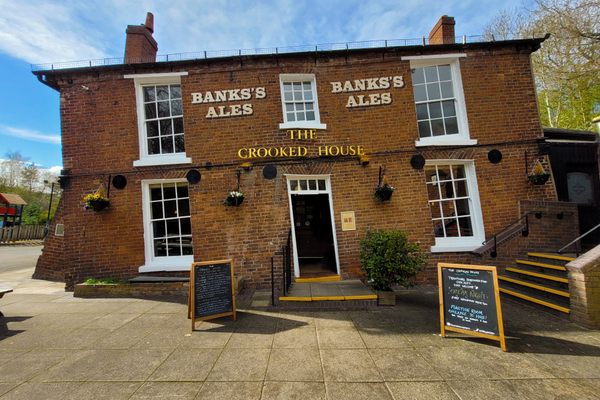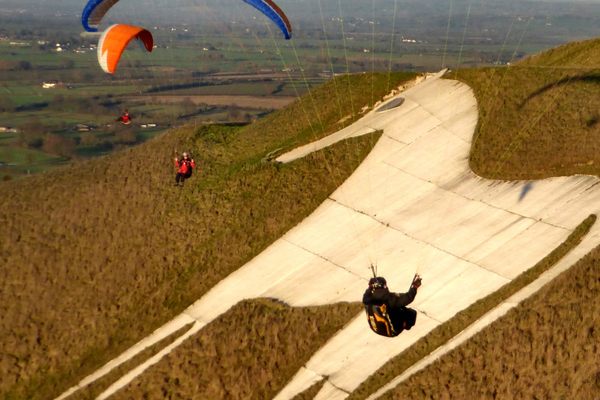The Extinct Horses of Great Abaco Island May Live Again
Nunki, the last Abaco Barb horse, died in 2015.

An impending storm darkens the sky above the splintered canopy of Caribbean pines. Milanne “Mimi” Rehor points out plants that once sustained the herd of wild horses that inhabited this limestone crescent in the northern Bahamas until just two years ago. “Palm fronds. They ate the palms, and briars, and of course the grass,” she says, and then nods toward a shiny green tree on the edge of the road. “Also this. Don’t brush up against this. It’ll give you blisters. Poisonwood. But after fires, the horses used to eat this, too, once the oils burned off.”
Equines long roamed the forests that blanket Great Abaco Island, but the last horse died in 2015, marking the extinction of a historically and genetically significant sub-breed of the threatened Colonial Spanish Horse. The Abaco Barb, like most feral equines, was compact and sturdy thanks to generations of surviving in the wild. The horses stood about 13.2 to 14.2 hands (54 to 58 inches) at the withers and each weighed an average of 800 pounds. Their feet were hard and well-shaped from trekking across the island’s rocky surface in search of food.
However, unlike most other wild horses in the Americas, the Abaco Barb spent generations in geographic isolation. According to equine geneticist Gus Cothran, who analyzed the DNA of 22 Abaco Barbs for Rehor in the 1990s, the horses were little changed from those brought across the Atlantic more than five-hundred years ago.
About half were blue-eyed “splash white” pintos, with belts and bonnets of white thrown against a brown hair base. Others were roans, with ivory hairs running throughout mahogany or copper coats, giving them a faded appearance. Most were “gaited,” meaning that in addition to the four types of movements most horses use (walk, trot, canter, and gallop), they had the capacity for very smooth lateral gaits in which both legs on each side move in unison. Similar movements are seen in other horses with old roots, including Paso Finos, but not in more modern Spanish breeds.
Strike up a conversation with Great Abaco Island’s long-time residents and many have childhood memories of spotting the horses during family road trips. They’re also likely to have a theory about why they disappeared. Though the Abaco Barb thrived on the island for generations, beginning in the 1960s, human actions and environmental changes weakened the herd and ultimately led to its demise. As Rehor, Director of the Wild Horses of Abaco Preservation Society, fights to bring the animals back from extinction, she’s highlighting their contentious history and uncertain future.

Nobody knows how or when the horses first came to the Abaco Islands. One story claims they swam ashore, survivors of the frequent 16th-century shipwrecks that fed the archipelago’s salvage-based economy. A second tale suggests that Loyalists fleeing the American Revolution brought their horses with them to the island. Still another, the one that Rehor favors, traces the horses to the island’s 19th-century logging operations, when companies imported equines from Cuba to haul lumber and later turned them loose.
According to Cothran, the genes indicate that any of these tales could be the reality. “What we [had] there on Abaco is the old actual colonial introduced horse rather than a more modernly introduced Spanish horse,” Cothran says. Such a clear link to the equines that were introduced to the Americas in the 15th century is rare. Most modern sub-breeds of the Colonial Spanish Horse have long interbred with released stock horses.
Though their entire genome has yet to be sequenced, the Abaco Barbs’ rare profile could hold useful information “particularly if you consider what’s going on ecologically. Perhaps you have some genes that have value in the future that would not exist anywhere else,” Cothran says, referring to climate change.
From a scientific perspective, that’s what makes their disappearance such a tragedy.

The Abaco Barb’s genetic significance is a key factor behind Rehor’s mission to clone “Nunki,” the lone survivor who died in 2015, and attempt to re-introduce the herd. But to Rehor, who watched over the herd and has fought for their interests since 1992, there’s a social justification as well. “There was here a piece of history. Various events destroyed that history,” she says.
In the 1960s, a logging company cut a road through Abaco’s pine forests, running the length of the island, to harvest large quantities of pulpwood. This simultaneously gave local hunters increased access to remote parts of the island and destroyed the horses’ habitat. The hunters likely shot the horses in addition to the wild pigs that were their main target, and their dogs frequently killed foals.
But humans had an even darker role in the first major assault on the Abaco Barb herd. Specific dates remain hard to pin down, but sometime in the 1960s, an unattended child tried climbing atop one of the horses, but was kicked and killed. Angry townspeople began killing the horses on sight, running the animals down on roads and shooting them in the pine forest. Nobody knows exactly how many horses were killed, but the herd was effectively culled. In the middle of the 20th century, estimates placed the herd at 200 individuals. By the close of the 1960s, only three remained.
Former Senator and MP Edison Key told Rehor he learned of the slaughter in the early 1970s when, while clearing land for a ranch called Bahama Star Farm, he came across horse carcasses. With the help of his friend and brother-in-law, he moved the remaining three horses onto the property to rebuild their ranks.

Once the herd reached 12 horses, they were again released in the nearby pine forest, where they seemed to flourish despite severe genetic bottlenecking. By the time Rehor anchored her wooden sailboat off the coast of the Abacos in 1992, they had bounced back to about 30 individuals. However, by 1997, only 16 remained. Though nobody can confirm why the horses began disappearing again, local lore suggests the animals were being hunted for both sport and food.
In 1999, Hurricane Floyd dealt what might have been the final blow, destroying the forest understory that had supported the Abaco horses for so long. In search of food, the horses found their way back to Bahama Star Farm, which had been converted into a citrus orchard. Irrigation and crop-dusting gave the horses a new diet of pesticides and high sugar grasses which, combined with a reduced need to move about looking for food, led to a host of health and reproductive problems.
Around 2004, it became clear the herd wouldn’t return to the forest on its own, so Rehor and the local government moved them to a fenced-in parcel among the pines. The government granted 3,800 acres for the horses, but at any given time, they only roamed a portion—initially 200 acres, then increased to 1,000 acres—of that area. The population never recovered, and when Nunki died in 2015, the breed was gone.

Originally from the U.S., Rehor decided to turn a visit to the Abacos into a permanent move upon learning of the Abaco Barb. The avid sailor and lifelong horse lover spent the next 23 years working to get the herd the attention and protection it deserved. For several years she simply observed and photographed the horses, but in response to their 1997 decline, she founded the Wild Horses of Abaco Preservation Society. In addition to partnering with local vets and trying to bring in farriers and veterinarians from the United States to help address the horses’ growing health problems, Rehor led the effort to have their DNA analyzed.
She also had the foresight to preserve cells from Nunki, sending them to ViaGen, a Texas-based laboratory, in the hopes that one day cloning could help revive the herd. Since no cloneable tissue remains from Abaco stallions, Rehor’s plan is to make two clones of Nunki and breed them to a similar stallion in an effort to preserve at least some of the rare genes Cothran found in his analysis and to return horses to the island.
Rehor argues humans owe the Abaco Barb at least this effort, citing the succession of aforementioned human and natural events for the herd’s demise. Echoing the larger debate over de-extinction at times, some wonder whether the project is worth the considerable funding and human efforts it will require, and question Rehor’s competence as a steward. The government of the Bahamas has long been stretched thin when it comes to caring for the horses, and other wildlife and environmental efforts—those in the interest of indigenous flora and fauna—take priority.
“[Mimi always] had a real interest in the well-being of the horses,” says David Knowles of the nonprofit Bahamas National Trust, which manages Bahamian national parks. “My question at the time was whether she was qualified. We tried to get our vets to work with the horses, but we were stretched thin…. Personally, I think it was a tragedy that we lost them all.”
Today, Rehor still fights to maintain her vision of returning Abaco Barbs to their island via cloning. Nunki’s cells have been cultured in anticipation of the cloning process and are being stored at ViaGen labs, as researchers await a go-ahead from Rehor. But funding has dwindled and, despite approval from the federal government, she is tired and frustrated. “They say that one door closes [and another one opens],” she says, shuffling a pink Croc-clad foot in the dirt. “Ain’t nothin’ openin’. I’m getting tired.” She wonders if she should abandon it all. After all, she notes, “the genes are safe.”









Follow us on Twitter to get the latest on the world's hidden wonders.
Like us on Facebook to get the latest on the world's hidden wonders.
Follow us on Twitter Like us on Facebook